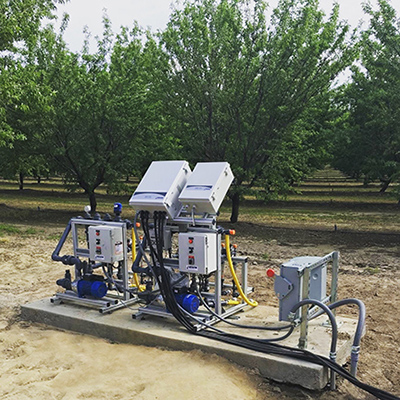The Western Growers Innovation team remains focused on our three big initiatives: automation (to help address labor cost and availability challenges), biological solutions (to help address input regulatory and efficacy challenges) and increased availability of AgTech-enabled workers (to help operate all the new automation and biological solutions). As we continue working with education, industry and elected-official partners, it is becoming apparent that taking a holistic view of the entire innovation process is required to really try and accelerate activity. Specifically, we want to build innovation funnels with key metrics measured regularly so we can identify challenge areas and see where things need to get better.
The main reason for this is that WG remains focused on the later stage of commercialization efforts, including grower discovery calls and feedback, field trials and case studies. From a systems perspective, this is the back end of a funnel that starts at the earliest stages with R&D, frequently on a University campus and for specialty crops routinely at a UC or CSU Ag Department with a student team and professor involved. Over the next few months, our team will be working with our partners to put together some dashboards that can represent the funnel for our key initiatives.
The funnel begins with R&D–how many R&D efforts are there that are officially recognized and beginning to move toward a real 1.0 product. To start with, we will capture the metrics only at UC and CSU to keep the dashboard focused and manageable. The next step is MVP–how many R&D teams have actually gotten to a minimum viable product. There would be significant fall off to this step as many teams would stay in the R&D portion of the funnel (top or first portion) for several months through design and early prototyping. After that, how many teams are able to get IP (intellectual property) protected and then generate a license to get the IP in the hands of a real startup that gets the idea up and running off campus. Again, each step would have a significant drop off in number.
Once the startup is formed, how many get to phase 1 of product field trials–does it do what it is supposed to do and does it not have any unintended harms/consequences? Onto phase 2 next–how many can do this in a repeatable fashion (i.e., does it work as expected most or all of the time?). And then on to phase 3–trials in a real commercial scale grower operation that prove the product can work as advertised and do so with a business model and pricing strategy that fit with grower economic requirements.
The first step will be to develop the funnel and get feedback from industry and innovators to make sure we can agree on how and what to capture. The second step will be to begin to capture this data on a regular basis and watch the changes from report to report. For starters, we will target quarterly updates and develop a way to measure absolute numbers and QoQ(quarter on quarter) incremental changes on key metrics. It’s clear that this will deliver a lot of value for the AgTech ecosystem. It’s not yet clear how much work this will take initially and ongoing. As with so many things, the best way to find out is to start doing the work, then figure out what the real workload is likely to be once we’ve done the first couple of iterations. The initial funnel work will be in automation, then biologicals and then next gen ag worker. All three support a system design approach, and the funnel (likely in the form of an infographic) will be a great first step in looking at the innovation picture for both of these key areas all the way through from the earliest stages to scale out and in fields.





